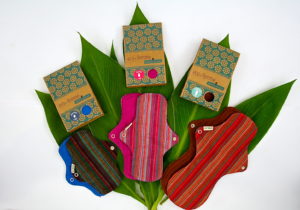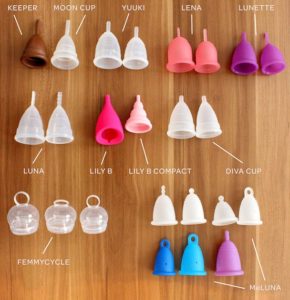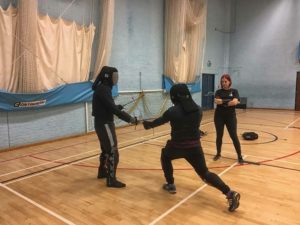A personal Open Letter.
TL;DR: Read the bold text.
I’ll be honest, I’ve been considering writing this letter since the beginning of the pandemic, and as things have progressed and while things have gotten harder and harder for me, I am as confident then as I am now about posting this. Which means I am still not sure It is the right thing to do.
For those of you who have been long members of the forum or have followed esfinges page over the years, you might have noticed that after the give a girl a sword major project esfinges has been kept on a bare minimum. Minimum posting on the public page, a bit later in response moderation in the forum, messages, and emails unanswered for months etc. I have assumed no one has blink much of an eye since the pandemic has taken a toll on everyone, and with little outdoor fencing, it makes sense things are a little plain. But the truth is, being an online platform, this time should be Esfinges time to shine, and in many ways I very early on promised to uses Esfinges to create a platform and a place to bring a bit of life and provide activities to folks at home for as long as this later. But if that was the case, why hasn’t it happened yet? This is where I hesitate, and this, is when I go a bit personal.
3 years ago, I immigrated to the USA to marry my awesome husband and form a family together, this immigration process was and continues to be a long, LONG, hard, and overwhelmingly expensive process. A process that prohibited me to work for a year, that forces my husband to demonstrate able to provide for us both at all time under the risk of getting me deported when he can’t, a process that required us, for safety as the process is messy, to hire an immigration lawyers for 5k who did great at first, but vanished under the smoke this march when we were ready to continue the second part of the process, forcing us to spend yet another chunk of money both for immigration fees and a new lawyer. It was half way through this time that I got a dream job living as a part time HEMA and Sport fencing teacher at my club where my husband worked as well as a coach and as a manager. It wasn’t much but it was something, and all went manageable, except for the fact that for the second time in his life and in less than 4 years my Husband contracted severe pneumonia, something that led him to various visits to the ER, weeks at the hospital including Intensive care, and so on. For those of you who are not from the USA, The USA healthcare system is awfully expensive. Between this, a sliced finger, a shoulder injury, an elbow injury and other list of unfortunate events we have hit our 7k deductible for 3 years in a row.
And yet we managed, with debt and cards, but we managed, and COVID-19 hit, it hit us with what has been 9 months of unemployment, with the risk of my deportation if we ever dare to request food stamps, with realizing most of the state support also puts me at risk of losing my green card. It arrived with the notion that we’ve only made it through and not lost our apartment because of the love and care of our friends and family to whom we own more than we we’ll ever be able to re pay.
I was eventually able to get a job, not even part time, not even enough to pay rent, but something at least, my husband might be in the chance of finally getting employed after almost a year of searching. But the debt is drowning and we can’t seem to see the end of it making reality quite depressing. And he truth is that even with new jobs we continue to be at risk of Bankruptcy and a potential loss of my green card.
Considering the fact I mentioned I am an Immigrant I almost assume there’s no need for me to explain the overwhelming factor of isolation from my family and the isolation we’ve had to put ourselves being my husband a person at a higher risk.
I have to come to the realization that I’m currently emotionally and economically unable to provide to Esfinges (Don’t panic patron donors, your money is intact for the time I find my strength back) I find my self so out of energy for engaging projects that I don’t even have the energy to delegate work to all the wonderful staff who’s more than eager to be there and help and support and grow Esfinges. Who in fact, alongside our members, are the ones who have kept the page and forum afloat. This inability to care for Esfinges I must had has been another unpleasant blow to my current daily life.
I do not even know if this is a big deal to others or not, but I do want to apologize. For the time being and until further notice, Esfinges will continue to function under minimum steam, you might not see much from us other than a few memes here and there, some old re posts and some happy likes every now and then, I might neglect messages even when I don’t want to. And the truth is I do not know how long this stagnation will last. But I do want to reassure you all that once I am ready to be back, I will be making up to the time lost.
I don’t feel very comfortable sharing this, nor asking people for things, but the truth is, that at this time, reality is to hard for me to hold my pride.
If you are able to help and support me or support Esfinges, this is what you can do:
To support Mariana:
My husband and I have created a donation site, anything at this stage is helpful.
https://fundly.com/save-david-mariana?fbclid=IwAR1lx-G6wbZnoQ6jXZ-mjFU86pvAObdISAANtor5u6P6cFopVTsx5xdRQsU
Support Esfinges:
- Help us with engagement! Even if we post random and scarcely, your likes and comments will help us remain relevant on people’s feed, so that way we don’t have to rebuild engagement once were back.
- Share content with us: Cool pictures? Nice Esfinges relevante memes? Videos of women/NB people being awesome? HEMA positive content? Share it with us so we can share, having things to keep our page active is half the battle!
- Be mindful and kind on the forum. The community is already great, but keeping in mind the humans behind the keyboard keeping things civil might be tired, so try to make life easier by reading and following the forum rules, and reminding other members about them. Knowing the rules would reduce the need of moderation 90% of the times!
Thank you all for the love and support!
Mariana.
















